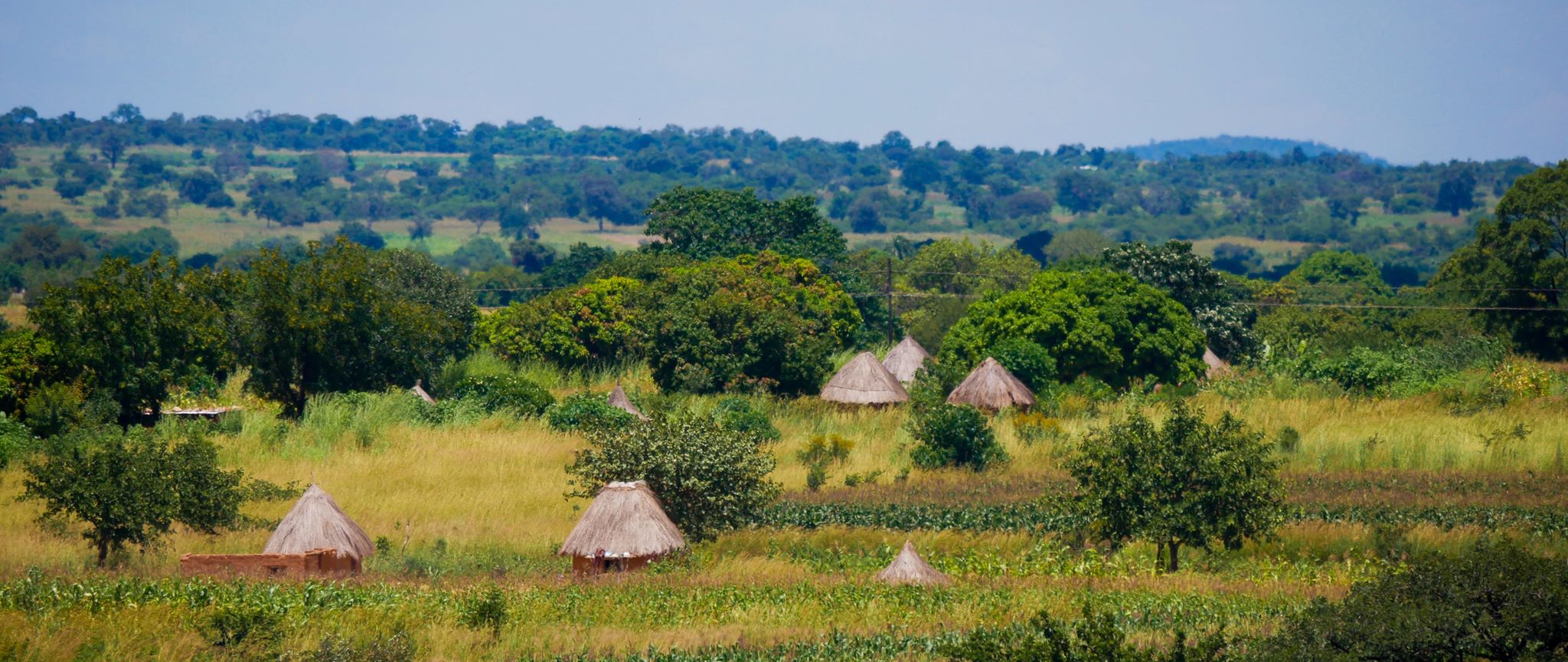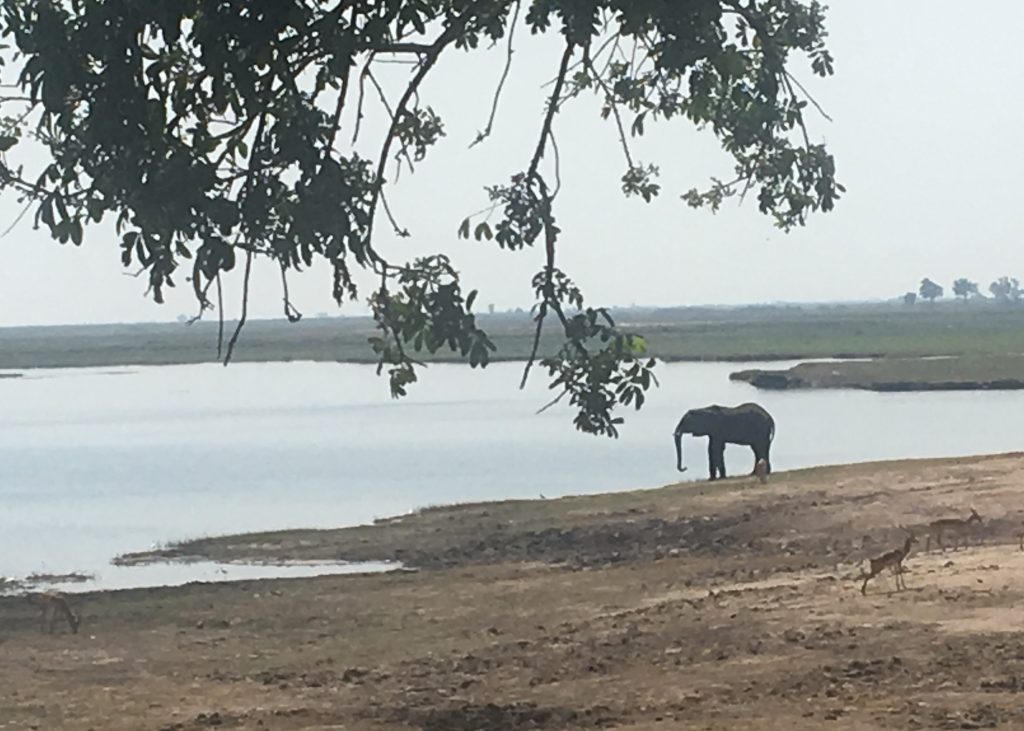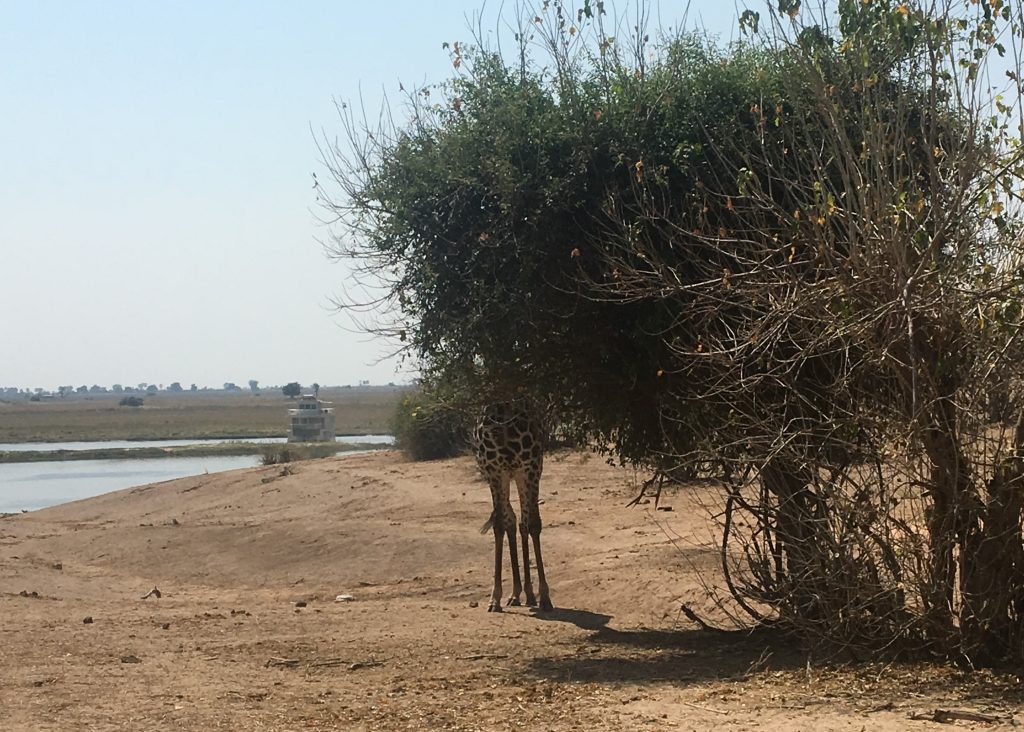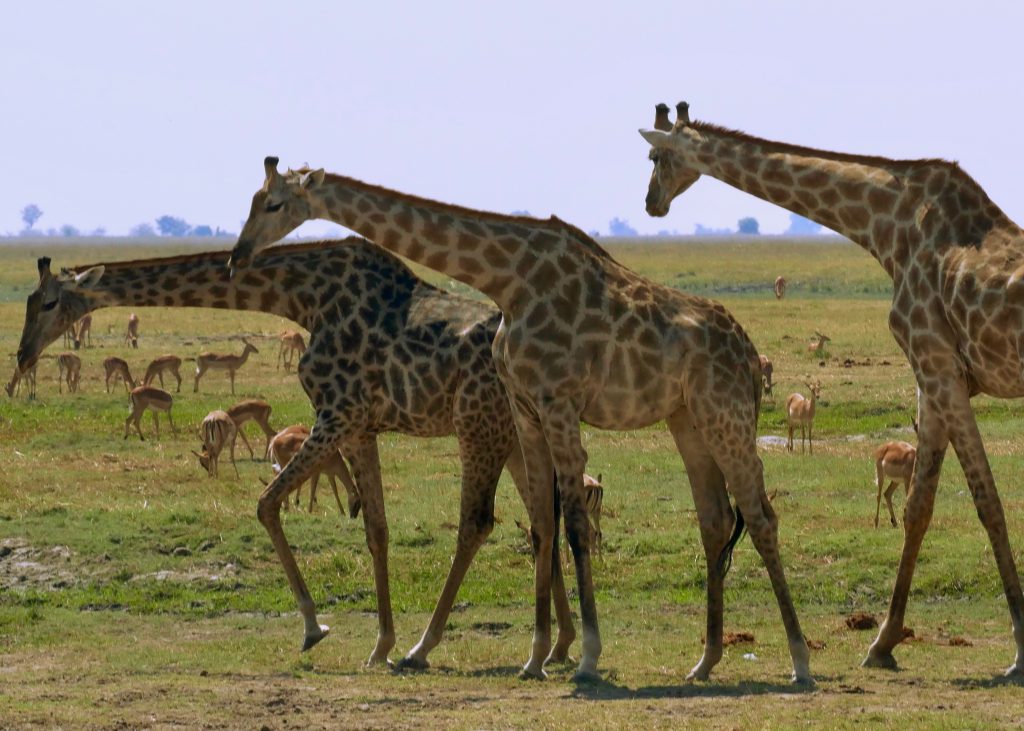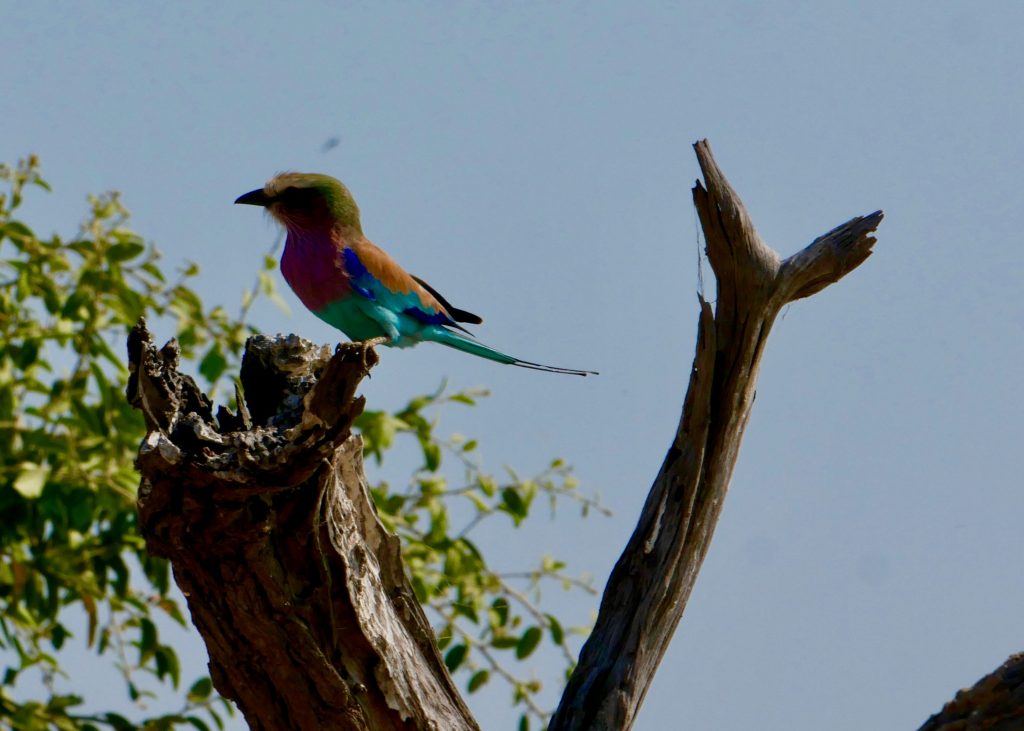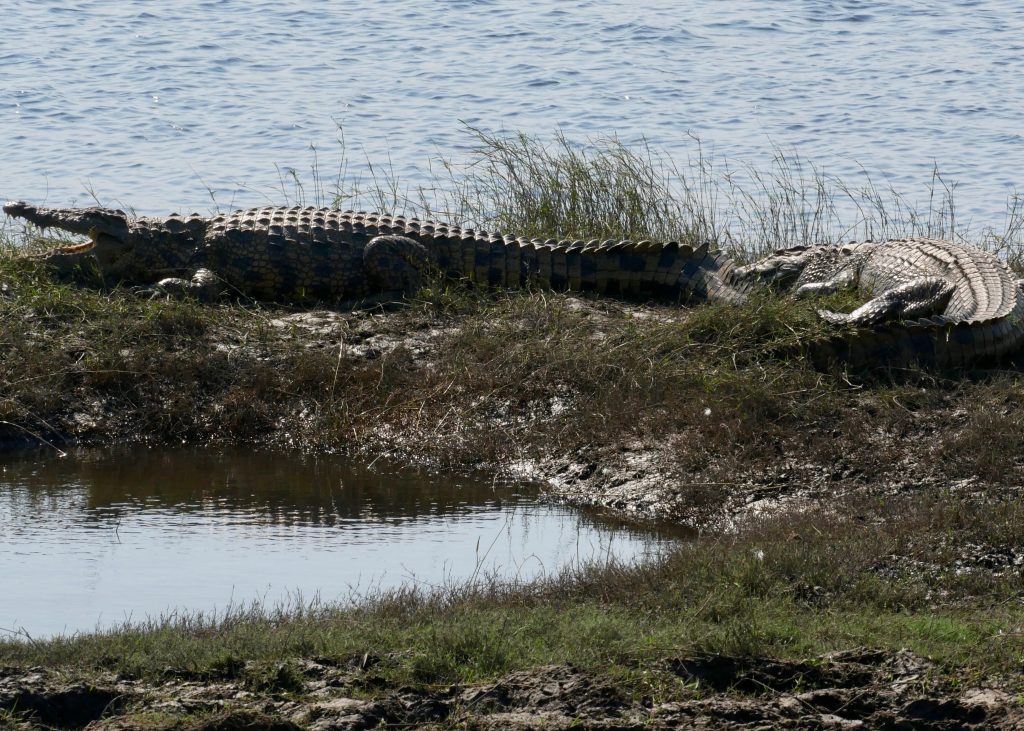Occasionally a day comes along that makes you stop and appreciate the beautiful world around you away from the rush of everyday life. Stepping back and untangling ourselves from our daily lives for a day off when in Zambia, the trip that Helen and I took to Chobe National Park, Botswana in August was food for our souls. Being surrounded with noise is such a normal part of modern life that the complete silence of the savannah, penetrated only by the occasional bird song, was a life changing experience.
After meeting our fantastic tour guide OT straight off the ferry from Zambia, the three of us headed into the park. Looking back at the first photos I took during the day, it’s clear that I had no idea of what the day held. Multiple blurry photos of a distant, lone elephant and the bottom half of a shy giraffe were the extent of my expectations.
But safe in the hands of the wonderful OT, we turned a corner and were surprised with the breath-taking sight of a herd of elephants and a plain full of giraffes:
Unexpectedly, when travelling at 30mph down a track, OT caught sight of the flickering ears of a pride of lionesses escaping the mid-day heat (under the right tree!):
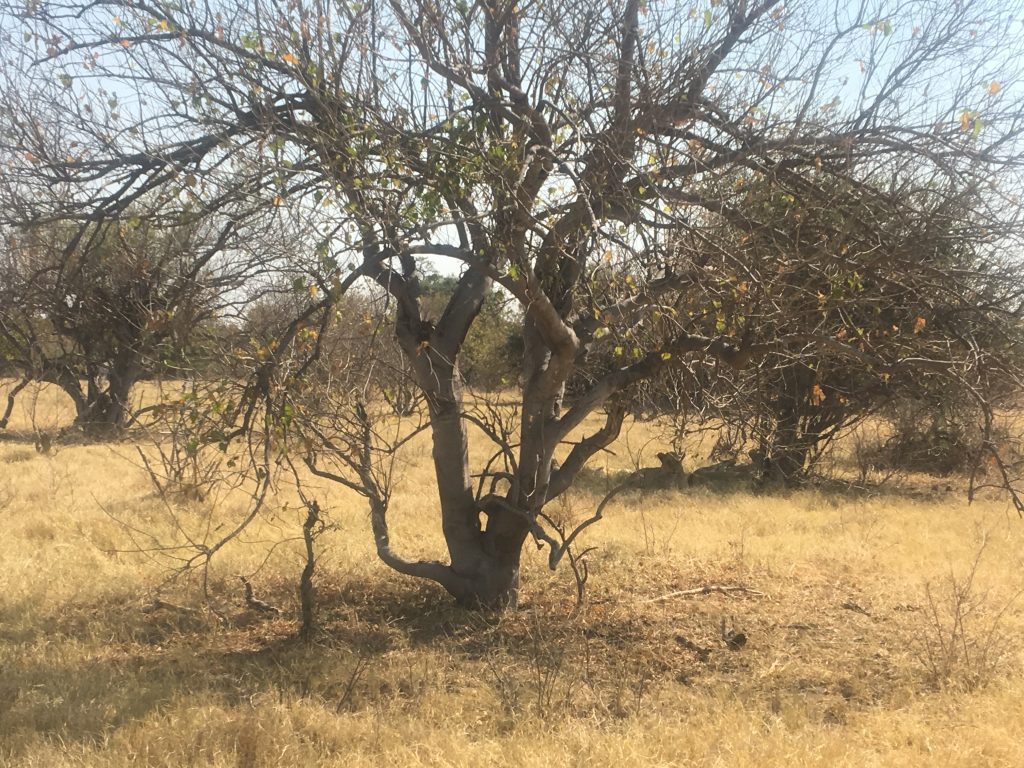
The beautiful birds and crocodiles rounded off the most beautiful day I’ve ever had the honour to experience:
Chobe was a fantastic example of how effective well-managed wildlife tourism can be. High Paying Low Volume (HPLV) tourism can provide strong financial incentives for conservation, especially important in the case of Botswana where a large area of the country is set aside for conservation in the form of protected areas and wildlife management areas. OT explained to us how poaching is being successfully tackled in the park to some extent but recent articles in the media, notably the Washington Post*, have reported high numbers of elephants being killed for their ivory. The promotion of sustainable wildlife tourism thus remains a priority for the Botswanan government to ensure that the beautiful experience of the country’s wildlife remains viable for future generations. People like OT depend on the wildlife of northern Botswana for their livelihood which makes this priority even more pressing. However, surely the mantra of sustainable development, “development that meets the need of the present without compromising the ability of future generations to meet their own needs”, is most poignant for the survival of the beautiful wildlife residing in Chobe, from the ‘Big 5’ (Lion, Leopard, Rhino, Elephant, Buffalo) to the smaller, but no less important, lilac-breasted roller.
*https://www.washingtonpost.com/news/morning-mix/wp/2018/09/04/its-open-season-for-poachers-nearly-90-elephants-killed-for-tusks-near-botswana-wildlife-sanctuary/?utm_term=.8ddb1510b43c

